ARMS
OF THE
POPES
OF ROME
The
Beginning
â
Nrs 1-200
|
The aearliest symbol of christian religious authority authority was
a latin cross and the emblem or badge of its bishops a christogram
or …P- monogram. In the 6th century
this was replaced by a symbol more specific for the man occupying the office
of bishop or the pope acting as the deputy of Christ. The early popes did not serve of shields or coats of arms to present
themeselves but of papal cyphers or monograms as did many of their
contemporary rulers. These were displayed in buildings or other public places
but also on coins circulating amongst their subjects. Nevertheles, the number of papal monograms
known is quite small, taking into account the many popes there have been.
Also the tradition apparenly was interruptted after the Great Schism of 1054. |
|||||
|
25 John II |
533-535 |
||||
|
Marble choir fence (schola cantorum) of the San Clemente in Rome with the monogram of Pope John II (533-535), carved into a number of panels of the choir enclosure.
Dating from the previous
Basilica. |
|||||
|
72 Hadrian I |
772-795 |
||||
|
|
|||||
|
75 Paschalius I |
817-824 |
||||
|
Monogram of Pope Paschalius I in Santa Cecilia in
Trastevere Pope
Paschal I rebuilt the church in 822, and moved here the
relics of St Cecilia from the Catacombs of St Calixtus.. |
|||||
|
Gregorus IV |
827-844 |
||||
|
|
|||||
|
79 Johannes |
844 |
||||
|
|
|||||
|
80 Leo IV |
847-855 |
||||
|
|
|||||
|
81 Benedictus III |
855-858 |
||||
|
|
|||||
|
84 Hadrian II |
867-872 |
||||
|
|
|||||
|
85 John VIII |
872-882 |
||||
|
http://www.numismatas.com/Forum/Pdf/David%20Ruckser/Papal%20Coinage.pdf |
|||||
|
133 Clemens II |
1046-1047 |
||||
|
Papst Clemens II Bamberg, Dom, Georgenchor, 1 Pfeiler der Nordseite Júngere Bildhauerwerkstatt Bamberg, zwischen 1225 und 1237 Schilfsandstein. H.
164 cm.
Tomb of Pope Clemens II, formerly Bishop Suidger
of Bamberg († 1047) in the choir of St. Peter of Bamberg Dom. On the front
St. Peter armed with a sword and a shield charged with a paschal lamb. On the
sides Ecclesia with a lion and Synagogue with a dragon. |
|||||
|
135 Leo IX |
1049-1054 |
||||
|
Signature of Pope Leo IX On a privilege
of 11.10.1051 |
|||||
|
Alexander III |
1159-1181 |
||||
|
In theTreasury of
Sens Cathedral a large piece of silk is preserved decorated with peacocks and
griffins.
344. Textile Fragment from
the Reliquary of Saint Potentiatus. Byzantine or Siculo-Byzantine (?) 12th century. Silk, 145 x 97 cm. provenance:
Reliquary of Saint Potentianus (Potentien) Trésor de la Cathédrale de Saint-Étienne, Sens, France (b7) This textile fragment from the reliquary of
Saint Potentianus, martyred third-century bishop of Sens, may be the fabric
that was placed around his remains in the early thirteenth century. The
bluish purple silk has a design in red and blue of large circles with frames
composed of pseudo-Kufic inscriptions. Connected axially by small disks, the
circles enclose stylized trees with pairs of griffins and birds (peacocks?),
one above the other. The interstices are filled with tree motif containing
two pairs of birds, and yellow beading trims the edge. Evans,
Helen C. & William D. Wixom. Eds. The Glory of Byzantium. Art and Culture
of the Middle Byzantine Era A.D. 843-1261. The Metropolitan Museum of Art,
New York, 1997. The peacocks are the badge of rank of a
prefect and the griffins of a metropolite.
These emblems would match a pope. These emblems would match a pope as
the Holy
See was a prefecture since the 6th century. From october 1162 until 23 November 1165 Pope
Alexander III resided in Sens in exile |
|||||
|
191 Bonifatius VIII |
1294-1303 |
||||
|
Portrait of Bonifatius VIII by Giotto (1276-1337). Basilica di
S. Giovanni in Laterano, Rome. This is
the oldest picture of a heraldic coat of arms of a pope Arms: Or, two bends wavy Azure (Caetani). (Galb. p. 38).
Boniface VIII seated before a curtain with his arms,
receiving St Louis By Simone
Martini. Coll. Naples Museum [1]
Tomb of Bonifatius VIII, Vatican grottoes Decorated with
his arms |
|||||
|
192 Benedictus XI |
1303-1304 |
||||
|
Tomb of Bededictus XI, Perugia On his tomb at Perugia are two plain shields,
unfortunately not showing any traces of heraldic bearings.
|
|||||
|
193 Clemens V* |
1305-1314 |
||||
|
Sou d’or of Clement V. From Sorgues Plain shields are also on the arms of Clement
V in the cathedral of St Bertrand de Commignes
|
|||||
|
Papal residence in Avignon 1309-1367 |
|||||
|
|
|||||
|
194 Johannes XXII* |
1316-1334 |
||||
|
Jacques Duèze, the son of Arnaud Duèze, was
born at Cahors of a family of wealthy burgesses who were making their way
into the ranks of the lower nobility. In 1702 Dom Bruno Malvesin in a study of the charterhouse of Cahors came to the conclusion
as to the tinctures of that Pope’s arms: Quarterly, first and fourth, silver a lion azure in an orle of
roundels gules, second and third, gules two bars gold
Outer wall of Cardinal Jean de Via’s Chape,
Cathedral of Avignon Galbreath pp. 77,
115
The arms of John XXII and the church from a stone
carving (the roundels omitted) Coll Galbreath |
|||||
|
195 *Nicolaas V |
1328-1330 |
||||
|
Nicholas
V, born Pietro Rainalducci (c. 1258 – 16 October 1333)[1] was an antipope in Italy from 12 May 1328 to
25 July 1330 during the pontificate of Pope John XXII (1316–1334) at Avignon.
He was the last antipope set up by a Holy Roman Emperor.
|
|||||
|
196 Benedictus XII* |
1334-1342 |
||||
|
Keystone with the arms of Benedict XII Papal Palace
Avignon Arms:
Argent, a bordure Gules Crest: Two
crossed keys Avignon (Vaucluse) Métropole Notre Dame des
Doms. 84.001.116 - Tombeau du Pape Benoit XII (XIVe s)
The four coats of arms above the
tomb are not of Benedictus XII but of an unknown cleric. |
|||||
|
197 Clemens VI* |
1342-1352 |
||||
|
Arms of Clemens VI Porte des
Champeaux, Papal Palace, Avignon Pierre Roger was the son of Guillaume Roger,
Lord of Rosiers, and of Guillemette de Mestre. The Rogers of Rosiers became
lords of Beaufort en Vallée and that name supplanted the original patronymic.
Clement’s arms, Argent, a bend Azure between six roses Gules buttoned Or, appear
on his seal as Archbishop of Rouen, 1333, and on the seal of the bailiwick of
Louviers, a fief of the see of Rouen, 1338, as well as on a lamp presented by
him to the town of St. Esprit near Bayonne, but the arms in the missal, in the
library of Clermont-Ferrand, sometimes attributed to him, are those of Louis
Roger de Beaufort, marquis de Canillac, and date from the 15th century.
Ciacconius makes the field of the shield gold and is followed in this mistake
by others. Gelre’s book of arms (1365-’75) gives the arms of the g va befoort as supra, with an old man’s head as crest. |
|||||
|
198 Innocentius VI* |
1352-1362 |
||||
|
|
|
||||
|
Keystones with the arms of Innocent VI in the parish
church Saint Eutrope de Beyssac (Corrèze) Arms: Gules
a lion Or and a bend Azure over all, and a chief Gules, thre shells Argent
and a fess Azure. The shields are augmented with a second chief
Gules, two crossed keys Argent or, two pairs of crossed keys. Crown: A
papal tiara Supporters:
two pairs of crossed keys
The vault of Saint Eutrope de Beyssac with keystones |
|||||
|
199 Urbanus V* |
1362-1370 |
||||
|
Coat of arms of Pope Urban V in Porta S. Francesco
in Assisi Guilaume Grimoard was the son of Guillaume
Grimoard, lord of Grisac, and of Amphelisa de Sabran, Countess of
Montferrand. A fine example of his arms, Gules, a chief
indented Or, appears in a manuscript in the Vatican Library. The same shield
appears repatedly on the ciborium of St. John Lateran, in some cases with a
chief of the Papacy. It can be seen in the latter form in a manuscript of the
library of the Musée Calvet at
Avignon, and on a relief on the cloisters of St John Lateran.
|
|||||
|
200 Gregorius XI* |
1370-1378 Papal residence in Avignon 1370-1376 |
||||
|
|
|
||||
|
To: Return |
|||||
 © Hubert de Vries
© Hubert de Vries








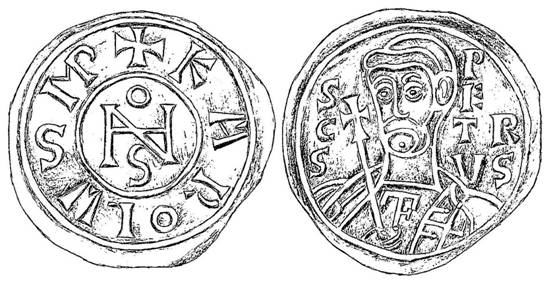

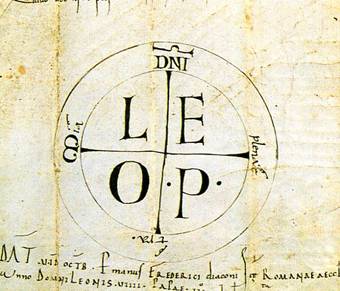
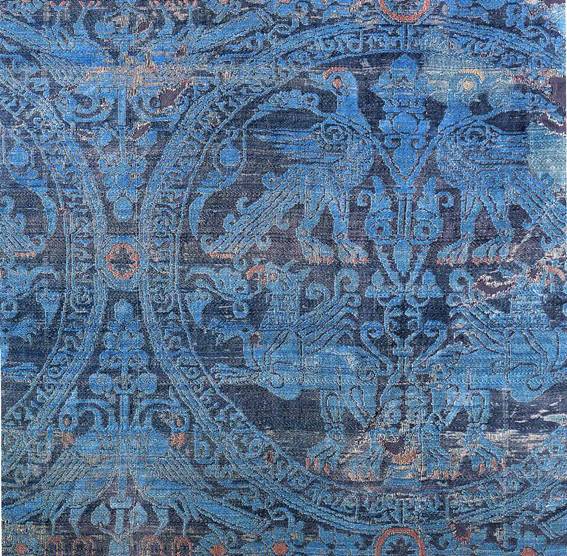

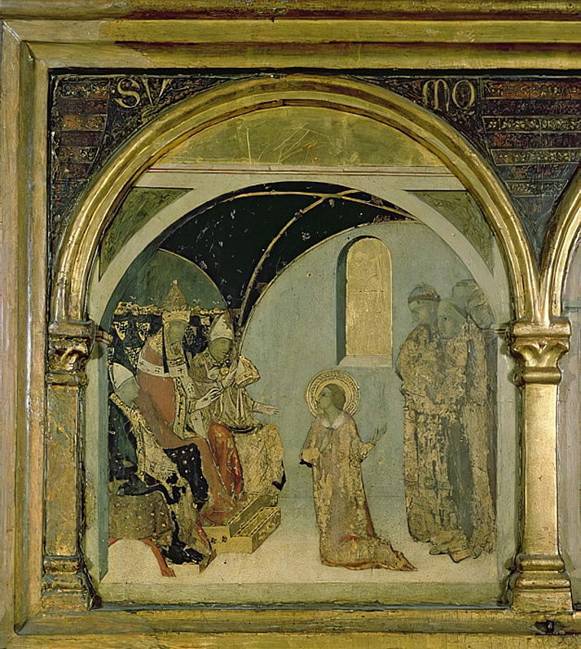

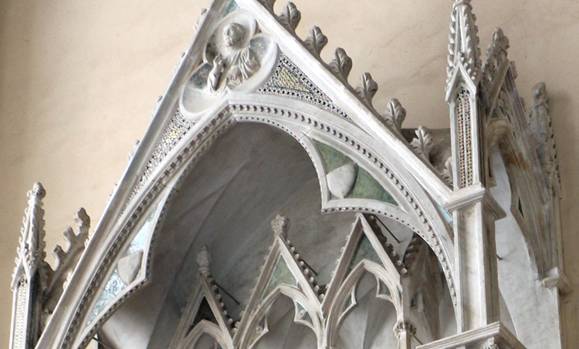

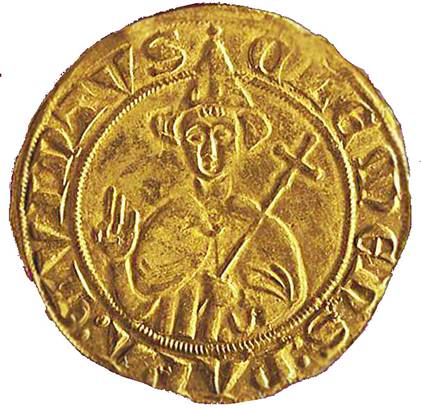

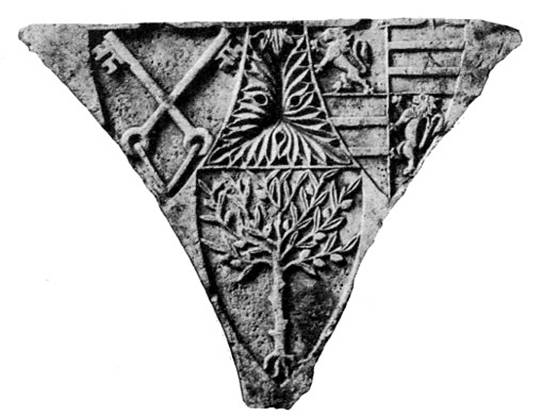


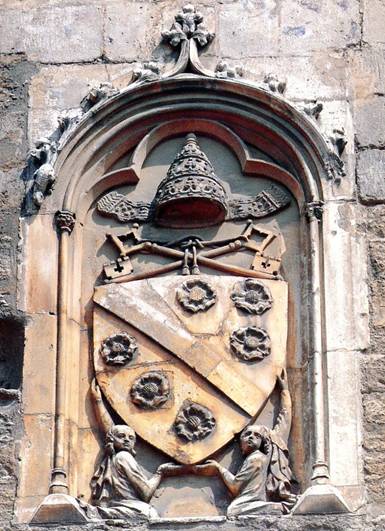
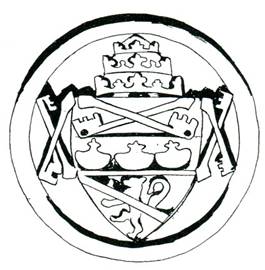
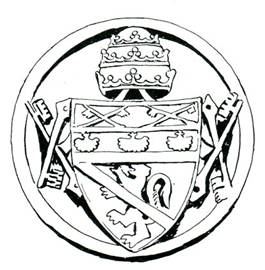
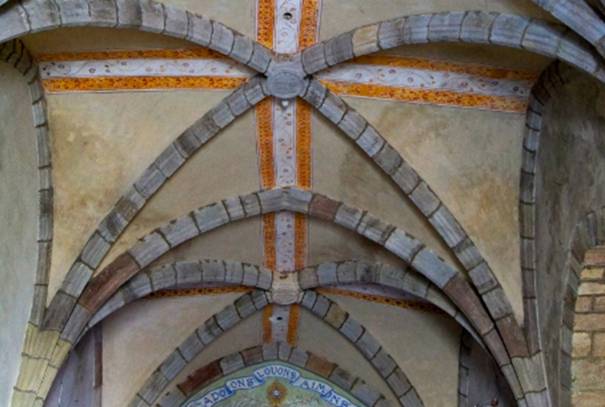

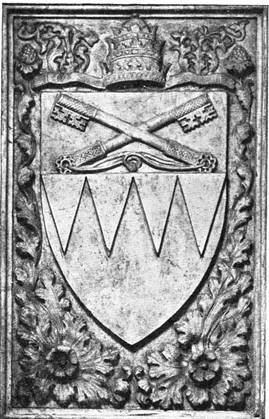
 Heraldry of the World
Heraldry of the World